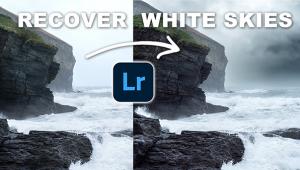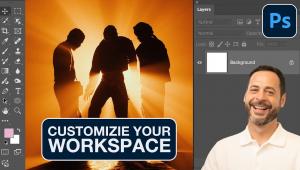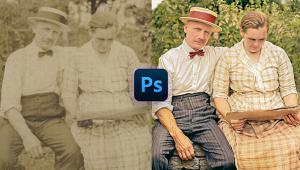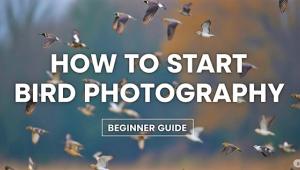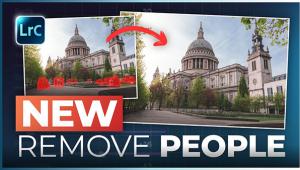Zooming Around
Eight Reasons Why I Shoot With Zoom Lenses
I'll never use a zoom lens." That's what some of my professional photographer friends said when I first got into photography back in the mid-70s. Back then, zoom lenses did not compare in sharpness to fixed focal length lenses. What's more, the zoom lenses of yesteryear were slow and heavy. "I never leave home without my zoom lenses." That's what many of my pro shooter friends now say. Here's why. Sharpness. Many of today's zoom lenses rival the sharpness of fixed focal length lenses. Like everything else in life, however, as the price increases, so does the sharpness of the lens. |
|||
But one could argue that the sharpest zoom lens on the planet is not necessary to get a super-sharp print. For example, with the sharpening tools in programs like Adobe Photoshop, and sharpening plug-ins such as nik Sharpener Pro!, soft images can be transformed into sharp images with a few clicks of a mouse. Still, it's best to start with the best quality image. Speed. As far as speed goes, many manufacturers offer fast (f/2.8) zoom lenses--a feat unheard of back when I started shooting. With a fast zoom lens, you can use a faster shutter speed, which means you can hand hold exposures in relatively low-light situations. Even slower zoom lenses are increasing in popularity. That's due, in part, to advancements in 35mm film technology. Again, and I know I'm showing my age, but back in the '70s, fast slide and negative film (ISO 400) was grainy and muddy as heck--from a professional standpoint. Today, even the ISO 800 color print films and ISO 400 slide films produce very acceptable images--as do the fast ISO settings on digital cameras. And if the grain bothers you, it can be reduced in the digital darkroom (by going into Channels and applying the Gaussian Blur in the Blue channel, using Photoshop, of course). |
|||
One note on grain here. Photographers like Robert Farber, known for his exquisite portraits of women, actually use grain to take out some of the reality of his pictures. So, grain can be a good thing. Fast focusing. In many situations, an autofocus zoom lens can focus faster than you can. That goes for zoom lenses, too. And if your camera has focus tracking or continuous autofocusing, you can get a sharp picture of a subject even if it is moving toward you. (By the way, many of my pro friends, who also said they would never use an autofocus camera, are now shooting with 'em. I'm glad to see that we pros are so open-minded.) Compactness. I remember my first zoom. It was heavy and bulky. Today's zoom lenses are relatively compact and lightweight. Because they take up less space in my backpack, I can pack more accessories. Zoom range. Today's zoom lenses offer just about any zoom range you want, from 17-35mm on the short side to 100-400mm on the long side. What's more, the zoom range has been extended to a point unimaginable even a few years ago. I'm referring to Sigma's 50-500mm lens and Tamron's 28-300mm lens. As the late Frank Zappa would say, "Wowie Zowie." |
|||
One note here on wide angle zooms, like the Canon 17-35mm zoom I use. They were late bloomers, so to speak--because getting sharp optics was a challenge. Today, many of these wide angle zooms are super sharp. For example, one picture I took with my 17-35mm zoom was enlarged from its 35mm frame to 30x60 ft for the Kodak Colorama in New York's Times Square. Now that's sharp. Versatility. Perhaps the biggest reason zoom lenses are so popular today is that they offer photographers tremendous versatility. For example, I shoot about 90 percent of my assignments with a 17-35mm zoom on one camera body, and a 70-200mm zoom on another. That's it. No kidding. Sure, for wildlife, sports, and some portrait sessions, I use a 100-400mm zoom (sometimes with a 1.4x tele-converter). And of course I pack a macro lens. But the two-lens setup lets me quickly and easily "compose and shoot and get the heck out of the way," something that is important in the type of photography I do--which is often people photography. Creativity. Zoom lenses make the process of taking a picture more creative, because you can compose and crop a scene in-camera and experiment with different compositions. Fun. Here is another reason to use zoom lenses: they make picture taking more fun. Take it from me, a photographer who likes to have fun when he is shooting. So, go out there and have some fun with a zoom lens! |







































